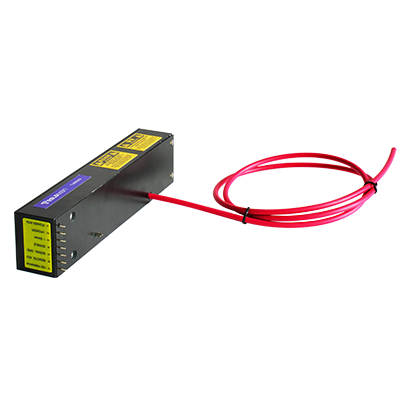Optimization of Multiplication Factor of High Voltage Power Supply for Electron Multiplier
In modern scientific research and industrial inspection fields, the electron multiplier, as a key device capable of amplifying weak electron signals, plays an important role. The quality of its performance depends to a large extent on the effective control and optimization of the multiplication factor by the high voltage power supply.
The working mechanism of the electron multiplier is based on the principle of secondary electron emission. When an initial electron strikes the surface of the dynode of the multiplier, multiple secondary electrons are excited. These secondary electrons are accelerated between subsequent dynodes and continue to strike the next level dynode, generating more secondary electrons. This cycle repeats, achieving step by step amplification of the electron signal. The high voltage power supply provides the necessary accelerating electric field for the entire process. The magnitude and stability of its output voltage directly affect the acceleration of electrons between dynodes, thus determining the multiplication factor.
The multiplication factor is a key indicator for measuring the performance of the electron multiplier, representing the ratio of the number of output electrons to the number of input electrons. Optimizing the multiplication factor is crucial for improving the sensitivity and signal detection ability of the electron multiplier. From the perspective of the high voltage power supply, increasing the output voltage can enhance the acceleration of electrons between dynodes, enabling secondary electrons to acquire higher energy to strike the next level dynode, thereby generating more secondary electrons and effectively increasing the multiplication factor. However, excessively high voltage may lead to increased noise and a shortened lifespan of the electron multiplier. Therefore, a balance needs to be struck between the two.
To achieve the optimization of the multiplication factor, first of all, it is necessary to ensure the stability of the output voltage of the high voltage power supply. Minor voltage fluctuations can cause changes in the acceleration effect of electrons, thus leading to instability of the multiplication factor. The use of high precision voltage stabilizing circuits and advanced feedback control technologies can monitor and adjust the output of the high voltage power supply in real time to ensure voltage stability, providing a basis for the stability of the multiplication factor.
Secondly, optimizing the electric field distribution of the high voltage power supply is also of great importance. Inside the electron multiplier, the electric field distribution should be as uniform as possible. This can ensure that the acceleration process of electrons between each dynode is consistent and avoid deviations in the multiplication factor due to abnormal local electric fields. By carefully designing the electrode structure of the high voltage power supply and using appropriate insulating materials, the electric field distribution can be improved, and the uniformity of the multiplication factor can be enhanced.
In addition, with the continuous progress of technology, intelligent control technology has gradually been applied to high voltage power supplies. Using a microprocessor and algorithms to dynamically adjust the output voltage of the high voltage power supply according to actual detection requirements can optimize the multiplication factor under different working conditions. For example, when detecting weak signals, the voltage can be appropriately increased to increase the multiplication factor and enhance the signal detection ability; when the signal is strong, the voltage can be reduced to reduce noise and extend the lifespan of the electron multiplier.
In conclusion, optimizing the multiplication factor of the high voltage power supply for the electron multiplier is the key to improving the performance of the electron multiplier. By stabilizing the voltage output, optimizing the electric field distribution, and introducing intelligent control technology, precise regulation of the multiplication factor can be achieved while ensuring the reliability and lifespan of the electron multiplier, meeting the stringent requirements for electron signal amplification in different fields.




















